Abstract
Background: Nymphoides peltata is a hydrophyte with a nymphaeid growth form and is known to be an invader of aquatic ecosystems.
Objectives: To document the presence of N. peltata outside of cultivation in southern Africa.
Method: Herbarium vouchers of newly collected material were compared against the vouchers of indigenous members of the genus and with the relevant botanical literature to confirm the identity of the species.
Results: Nymphoides peltata is confirmed as occurring outside of cultivation for the first time in South Africa. The species was recorded from two dams adjacent to the Umgeni River in the KwaZulu-Natal midlands.
Conclusion: This is the first record of a non-indigenous species of the Menyanthaceae family for South Africa outside of cultivation and adds to our knowledge of the alien aquatic flora of the region. Nymphoides peltata is listed as a Category 1a species, which means that it should be eradicated.
Introduction
Nymphoides peltata (S.G.Gmel.) Kuntze, commonly known as yellow floating heart, is a perennial hydrophyte of the Menyanthaceae family. It grows in still or slow-flowing rivers and its indigenous range is extensive, including most of Europe, Asia Minor, north-central Russia (Tutin 1972) and Japan (Zoku 1965). The Nymphoides genus has approximately 50 species (Tippery & Les 2011), 13 of which are considered indigenous to Africa and Madagascar (Raynal 1974).
Within Africa, N. peltata has been recorded outside of cultivation in Ghana (JIRCAS 2010) and Algeria (De Bélair 2010). De Bélair (2010) listed N. peltata as indigenous to Algeria based on a record of one population near the town of Ben Azzouz. The absence of any record of this species in earlier botanical literature covering this region (Gubb 1909; Quezel & Santa 1962; Raynal 1974; Wild 1961) suggests that it may be an introduced species that has escaped from cultivation.
Five Nymphoides species are indigenous to southern Africa and to date no naturalised non-indigenous species have been recorded (Bredenkamp 2006; Cook 2004; GBIF 2017; SAPIA 2016; Whitehouse 1996). Despite this, N. peltata is listed on the South African National Environmental Management: Biodiversity Act (NEMBA) regulations (NEMBA 2014) as a Category 1a species, making it a species requiring compulsory control and eradication. This pre-emptive measure was based on N. peltata being invasive in Canada (Darbyshire & Francis 2008) and Sweden (Larson & Willén 2006), as well as naturalised in the American states of Tennessee (Chester 1996), Oklahoma, New York and Arizona (Clarke 1937; Correll & Correll 1972; Crow & Hellquist 2000).
Nymphoides peltata is cultivated as an ornamental plant in garden pools (Chester 1996) and aquaria (Allgayer & Teton 1987). In 2007, a landowner from Gauteng, South Africa, reported a cultivated population growing so prolifically that he needed assistance in its control (Henderson 2017). It was growing in an artificial, contained pond and was probably destroyed, as recent attempts to find this population have been unsuccessful (D. Cindi [South African National Biodiversity Institute], pers. comm., 01 November 2016).
This article reports the first record of N. peltata outside of cultivation in South Africa.
Research methods
An unknown Nymphoides species was reported in two dams adjacent to the Mgeni River in the KwaZulu-Natal Midlands (S29.44952° E30.31430°; Figure 1) in January 2016 (H. Grobler [Karkloof Safari Spa], pers. comm., 28 January 2016). Herbarium voucher specimens were collected and submitted to the KwaZulu-Natal Herbarium and were identified as N. peltata by the author. This was done through comparing the voucher specimens to the existing collections of this genus and to descriptions in the relevant literature (Darbyshire & Francis 2008; Mackinder 1990; Tippery, Les & Jones 2012; Whitehouse 1996). The Compton (NBG), KwaZulu-Natal (NH), Bews (NU) and the National Herbarium (PRE) did not have any specimens of N. peltata.
 |
FIGURE 1: Map of the known distribution of Nymphoides peltata in KwaZulu-Natal, South Africa. |
|
Ethical considerations
Material was gathered under permit OP 3929/2015 issued by Ezemvelo-KZN Wildlife.
Results
Nymphoides peltata was discovered in two dams that are part of a series of interconnected dams that are also connected to the Mgeni River, upstream of where the Mgeni joins the Karkloof River. The two dams have areas of 3.2 and 0.2 ha, and have N. peltata concentrated along the dam edges amongst indigenous sedges (Figure 2). In 2016, the N. peltata flowered from January to April, dying back in the winter months, and in 2017, it flowered again in January. Hippos (Hippopotamus amphibius L.) on a game farm on which the dams are located were seen eating N. peltata (P. le Roux [Karkloof Safari Spa], pers. comm., 09 February 2017).
 |
FIGURE 2: Nymphoides peltata flowers on stalks approximately 50 mm above the water surface (a) and a close-up image of the flowers and leaves (b) at the KwaZulu-Natal site where the species was recorded. |
|
Taxonomic treatment
Nymphoides peltata (S.G.Gmel.) Kuntze in Revis. Gen. Pl. 2: 429 (1891).
Type: JAPAN, Von Siebold s.n. (L0421238, lecto, JSTOR Plant Science image!).
Basionym: Limnanthemum peltatum S.G.Gmel. Novi Comment. Acad. Sci. Imp. Petrop. 14(1): 527 (t. 17), 1770.
For a full description, see Darbyshire and Francis (2008).
Specimen examined
SOUTH AFRICA. KwaZulu-Natal: Karkloof Safari Spa, 700 m upstream from Karkloof and Mgeni rivers’ confluence, 29.44952 °S 30.31430 °E (-AD), 697 m.a.s.l., 28 Jan. 2016, Cheek M. 2435 (NH).
Discussion
The origin of this N. peltata population is currently unknown. The seeds are dispersed through water and by birds, being disc shaped with marginal trichomes that can stick to waterfowl (Cook 1990). This is a possible pathway through which the plant could have arrived at these dams.
In its native range, N. peltata shows pioneer plant characteristics and can colonise large areas through vegetative growth in a season (Brock et al. 1983). Nymphoides peltata has had a significant impact on habitat structure and competitive interactions in the Swedish lakes where it has become established (Josefsson & Andersson 2001) and a weed risk assessment by the United States Department of Agriculture ranked the species high for impact and spread potential in the United States (USDA 2012).
Considering its impact elsewhere, this species warrants further research and a detailed weed risk assessment as laid out by Kumschick et al. (2015). A management plan has already been submitted to the Department of Environmental Affairs (Cindi 2016). However, surveys of nurseries and water bodies would help to get a more accurate delineation of N. peltata’s distribution and possible origin.
Acknowledgements
The author is grateful to H. Grobler and P. le Roux of Karkloof Safari Spa for alerting them of the plant and for field support, as well as M. Nxumalo for assistance in the field. Many thanks to N. Tippery for verifying the identity of the collections and to H. Terrapon for providing Figure 1. The author is also grateful to L. Henderson and D. Cindi for discussions around the Gauteng record, to A. Homrani-Bakali for information on N. peltata in Morocco, as well as M. Hamer and two anonymous reviewers for constructive criticism on earlier drafts.
This work was funded by the South African National Department of Environment Affairs through its funding of the South African National Biodiversity Institute’s Invasive Species Programme.
Competing interests
The author declares that he has no financial or personal relationships that may have influenced him in writing this article.
References
Allgayer, R. & Teton, J., 1987, The complete book of aquarium plants, Ward Lock, London.
Bredenkamp, C.L., 2006, ‘Menyanthaceae’, in G. Germishuizen, N.L. Meyer, Y. Steenkamp & M. Keith (eds.), A checklist of South African plants, p. 566, South African Botanical Diversity Network Report 41, SABONET, Pretoria.
Brock, C.M., Arts, G.H.P., Goossen, I.L.M. & Rutenfrans, A.H.M., 1983, ‘Structure and annual biomass production of Nymphoides peltata (Gmel.) O. Kuntze (Menyanthaceae)’, Aquatic Botany 17, 167–188. https://doi.org/10.1016/0304-3770(83)90056-6
Chester, E.W., 1996, ‘Rare and noteworthy vascular plants from Fort Campbell Military reserve’, Sida 17, 269–274.
Cindi, D., 2016, Management plan for Nymphoides peltata (yellow floating heart) to be implemented from 2016–2018, unpublished document, Department of Environmental Affairs, South Africa.
Clarke, O.M., 1937, ‘Spread of Nymphoides peltatum in lake Messina’, Proceedings of the Oklahoma Academy of Science 18, 21–22, viewed 02 July 2016, from http://ojs.library.okstate.edu/osu/index.php/OAS/article/viewFile/2963/2659
Cook, C.D.K., 1990, ‘Seed dispersal of Nymphoides peltata (S.G. Gmelin) O. Kuntze (Menyanthaceae)’, Aquatic Botany 37, 325–340. https://doi.org/10.1016/0304-3770(90)90019-H
Cook, C.D.K., 2004, Aquatic and wetland plants of southern Africa, Backhuys, Leiden.
Correll, D.S. & Correll, H.B., 1972, Aquatic and wetland plants of the southern United States, vol. 1, Environmental Protection Agency, Washington, DC, viewed 02 July 2016, from http://www.biodiversitylibrary.org/page/3347795#page/12/mode/1up
Crow, G.E. & Hellquist, C.B., 2000, Aquatic and wetland plants of Northeastern North America, vol. 1, University of Wisconsin Press, Madison, WI.
Darbyshire, S.J. & Francis, A., 2008, ‘The biology of invasive alien plants in Canada, 10, Nymphoides peltata (S.G. Gmel.) Kuntze’, Canadian Journal of Plant Science 88, 881–829. https://doi.org/10.4141/CJPS07208
De Bélair, G., 2010, ‘Nymphoides peltata, The IUCN Red List of Threatened Species, 2010: e.T164309A5820981’, viewed 02 July 2016, from http://www.iucnredlist.org/details/164309/9
Global Biodiversity Information Facility (GBIF), 2017, viewed October 2017, from http://www.gbif.org,. https://doi.org/10.15468/39omei
Gubb, A.S., 1909, The flora of Algeria, Baillière Tindall & Cox, London.
Henderson, L., 2017, email, 20 March, l.henderson@sanbi.org.za
Japan International Research Center for Agricultural Sciences (JIRCAS), 2010, For the future of agriculture in the developing world, viewed from 02 July 2016, from https://www.jircas.affrc.go.jp/project/Ghana/contents/botanical_pages/nymphoides_peltata.html
Josefsson, M. & Andersson, B., 2001, ‘The environmental consequences of alien species in the Swedish lakes Mälaren, Hjälmaren, Vänern and Vättern’, Ambio 30, 514–521. https://doi.org/10.1579/0044-7447-30.8.514
Kumschick, S., Gaertner, M., Montserrat, V., Essle, F., Jeschke, J.M. & Pyšek, P., 2015, ‘Ecological impacts of alien species: Quantification, scope, caveats, and recommendations’, BioScience 65, 55–63. https://doi.org/10.1093/biosci/biu193
Larson, D. & Willén, E., 2006, ‘Non-indigenous and invasive water plants in Sweden’, Svensk Botanisk Tidskrift 100, 5–15.
Mackinder, B., 1990, ‘Menyanthaceae’, in E. Launert & G.V. Pope (eds.), Flora Zambesiaca, vol. 7, pp. 51–56, Flora Zambesiaca Managing Committee, London.
NEMBA, 2014, National Environmental Management: Biodiversity Act (10/2004): Alien and Invasive Species List, Government Notice No. R599, Gazette No. 37886, viewed 02 July 2016, from www.gpwonline.co.za
Quezel, P. & Santa, S., 1962, Nouvelle flore de L’Algérie et des régions désertiques méridionales, Centre National de la Recherche Scientifique, Paris.
Raynal, A., 1974, ‘Le genre Nymphoides (Menyanthaceae) en Afrique et a Madagascar’, Adansonia ser. 2, 14, 405–458.
Southern African Plant Invaders Atlas (SAPIA) database, Plant Protection and Research Institute, Agricultural Research Council, viewed 1 May 2015, from http://www.agis.agric.za/agisweb/agis.html
Tippery, N.P. & Les, D.H., 2011, ‘Phylogenetic relationships and morphological evolution in Nymphoides (Menyanthaceae)’, Systematic Botany 36, 1101–1113. https://doi.org/10.1600/036364411X605092
Tippery, N.P., Les, D.H. & Jones, C.S., 2012, ‘Evolution of inflorescence architecture in Nymphoides (Menyanthaceae)’, Aquatic Botany 99, 11–19. https://doi.org/10.1016/j.aquabot.2012.01.001
Tutin, T.G., Heywood, V.H., Burges, N.A., Moore, D.M., Valentine, D.H., Walters, S.M. & Webb, D.A. (eds.), 1972, ‘Menyanthaceae’, in Flora Europaea, vol. 3, pp. 67–68, Cambridge University Press, Cambridge.
USDA, 2012, Weed risk assessment for Nymphoides peltata (S.G. Gmel.) Kuntze (Menyanthaceae) – Yellow floating heart, United States Department of Agriculture, Animal and Plant Health Inspection Service, viewed 01 May 2015, from https://plants.ifas.ufl.edu/wp-content/uploads/files/caip/pdfs/USDA-APHIS-WRA%20Nymphoides%20peltata-2012.pdf
Whitehouse, C., 1996, ‘Menyanthaceae’, in R.M. Polhill (ed.), Flora of tropical East Africa, pp. 1–5., A.A. Balkema, Rotterdam.
Wild, H., 1961, ‘Harmful aquatic plants in Africa and Madagascar’, Kirkia 2, 1–66.
Zoku, A., 1965, ‘Nymphoides’, in J. Ohwi (ed.), Flora of Japan, p. 742, Smithsonian Institution, Washington, DC, viewed 01 May 2015, from http://www.biodiversitylibrary.org/page/30046658#page/7/mode/1up
|